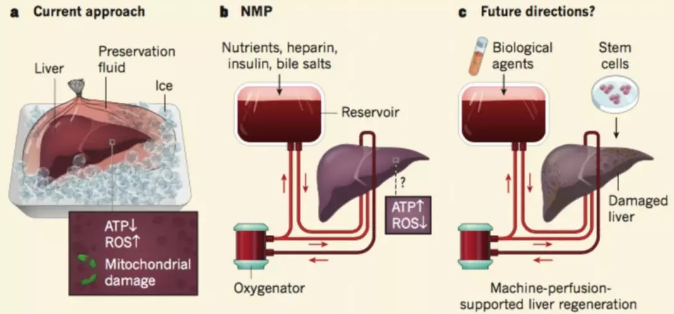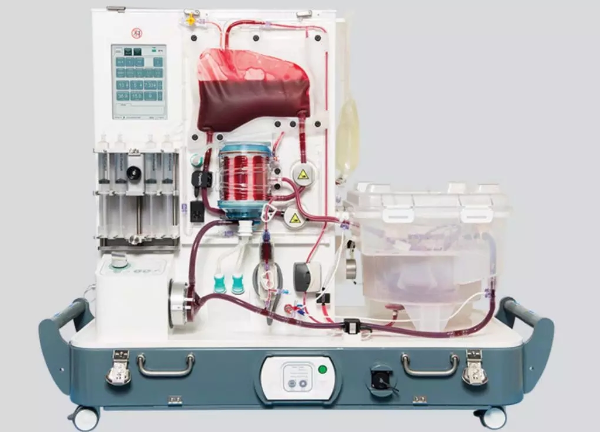"Nature" publishes the first major breakthrough in the preservation of human organs in 30 years: body
Advanced surgical techniques and the use of immunosuppressive drugs make organ transplantation possible. But even today, even for transplants with high success rates for liver transplantation, there are still three unavoidable restrictions: organ shortage, poor quality of donated organs, and difficulty in organ transport.
For the liver, a regenerable organ, one of the reasons for the shortage is actually a "discard" - many potential donor livers are damaged during storage, it is considered that the transplant risk is too high, the liver can not reach the transplant standard and is abandoned . In the face of huge supply and demand in the field of organ transplant medical treatment, this "waste" is becoming more and more dazzling.

“In 2017, one in five people in the UK was waiting for a lonely death in a liver transplant. Ironically, nearly 500 livers from deceased donors were not transplanted. Professor Constantin Coussios from the University of Oxford introduced that these 500 livers should have the opportunity to cure the disease.
Recently, David Nasralla and colleagues from Oxford University conducted the first randomized trial of 220 liver transplant patients, comparing conventional static cold storage (SCS) and normothermic machine perfusion (NMP) methods. According to the measurement of biomarkers of liver injury, it was found that compared with the former, mechanical perfusion of body temperature had less damage to the donor liver (about 50%), and the average preservation period of the liver increased by 54% (12 hours vs 8 hours). The utilization rate was reduced by 50%, and the details of the study were published in the April 18 issue of Nature.

Figure | Liver undergoing temperature perfusion
This study is the first direct and direct comparison of SCS and NMP. These findings suggest that if NMP can be widely promoted in the clinic, it is likely to greatly reduce the “waste†caused by the deterioration of organ quality and bring liver transplantation. Actively promote the transformation of the entire organ transplant field.
Although the first NMP equipment was launched in Europe in 2016, it has always been a hit because of its high price and professional requirements of equipment and operators. This precise quantification will provide some data support for the “waiters†and also provide valuable experience for the clinical promotion of NMP. With the gradual acceptance of NMP equipment and the success of simulating the human environment in vitro, NPM is very likely to make good achievements in organ maintenance and organ culture in the future.
Organ preservation methods have been almost zero progress in 30 years
The liver, the organ of about 3 kilograms, plays a very important role in the metabolic function of the human body: neutralizing toxins, storing glycogen, synthesizing secreted proteins, etc. The functions are complex and diverse, and it can be said to be the busiest. One of the organs, there are currently no artificial organs or devices capable of simulating all functions of the liver.

Liver transplantation can be divided into living liver transplantation and cadaveric liver transplantation. The liver of a cadaveric liver transplant comes from a donor whose brain is dead but whose heart is still beating. Live liver transplantation removes a part of the living donor's liver, but the donor of the living liver transplant receives more than the donor. The surgery is therefore more controversial.

At the same time, compared with other organ transplants, liver transplantation is among the best in terms of surgical success rate and postoperative survival rate. For major liver transplant centers, the success rate of liver transplantation is generally above 95%, the annual survival rate is 90%, and the five-year survival rate is about 70%.
However, it is hard to imagine that in the rapid advancement of surgical equipment and surgical techniques, people have made breakthroughs in organ transplantation surgery, but the methods for organ preservation have remained basically unchanged from 30 years ago.
Body temperature perfusion equipment can even simulate the human body
Due to preservation of transport restrictions, early organ transplants were performed on a small scale, with donors and recipients performing donor and transplant operations on nearly the same bed. With the development of technology, organ transplantation cooperation at the national level and even internationally is also possible, but every minute and every second is valuable for the removed organs, and it is highly probable that the organ will lose the value of transplantation due to poor preservation.
Organs from donors to recipients generally experience two key aspects of “warm ischemia†and “cold ischemiaâ€. Warm ischemia refers to the period from the time when the organ is removed from the donor to the time of cold perfusion (cold preservation). During this period, although the blood supply to the organ is interrupted, it is still in a metabolic state, and the ischemia will cause serious damage to the organ. Every minute is crucial (generally no more than 10 minutes).
Cold ischemia means that the donated organs are quickly lavaged by the lavage fluid, so that the temperature of the organ is quickly and evenly lowered to below 10 degrees, and stored at 2-4 degrees until the time of transplantation, and the conventional static cold storage ( SCS) is such a method.

Figure | Past, Present, Future
Infiltrating the organ in the preservation solution and placing it on ice can effectively reduce the metabolism, but there are also many undesirable problems. For example, the liver may be damaged by the decrease of ATP, and the harmful active oxygen begins to accumulate, mitochondrial damage, etc. When the blood is passed through the organ again after the transplantation, it is likely to cause an inflammatory reaction, and at the same time, due to the slowing down of the metabolism of the organ cells, Organ mass was assessed by biochemical indicators such as transaminase.
In fact, perfusion equipment is not a new thing. In recent years, with the improvement of technology and the improvement of blood formula, body temperature perfusion equipment (NMP) has become more and more popular. This system uses blood as a carrier to feed nutrients and biotin. When adding the circulatory system and external oxygenator to simulate the normal human environment, using this system can better monitor the organ quality in vitro and evaluate the transplantation efficiency.
Milestones in the preservation of transplanted organs
But isn't NMP really as good as people expected? There has been no exact data to give accurate quantitative answers.
David Nasralla and his colleagues chose to pave the way for the latecomers. They recruited 220 liver transplant patients and conducted the first randomized trial comparing NMP with SCS. They found that NMP had 50% less damage to donor livers, a 54% increase in mean liver preservation, and a 50% reduction in organ rejection compared to SCS (16 vs 32).
The results are clear, the NMP answer is more beautiful in the preservation of the transplanted liver, but this does not mean that we can prematurely assert that NMP is fully rolled up in the successful transplant. In addition to aspartate aminotransferase levels, one of the criteria for assessing graft success is the bile duct. The study also found that after one year of transplantation, the two methods did not differ significantly in the incidence of biliary complications and graft survival and patient survival, and therefore still require longer observation.

Figure | Expensive prices are likely to limit the promotion of OrganOx
At the same time, because NMP requires complex external equipment, it puts higher demands on the transportation, nursing and training of the users. It also means that it will take more time to wait for the final flight to the “ordinary people's homeâ€. day. Although the above-mentioned perfusion device called OrganOx is already available in Europe (the US is in the final testing phase), it is still not widely promoted due to its medical expenses of $5,700 per patient.
But objectively speaking, David Nasralla's research has set a good starting point for the promotion of NMP—share information, positive comparisons, and provide good data support for those who have “Linyuan squidâ€.
Of course, the significance of the NMP system is far more than this. The device can be applied not only to the transplantation of other types of organs, but also to the idea of ​​cultivating or maintaining its own organs in vitro - if you can take care of an organ like a patient, Providing conditions that are completely consistent with the human body, then whether humans need to replace the donor organs in the future, but directly maintain or culture the body organs in vitro?
At least for liver transplants, we have seen hope.
Disposable Gloves orange black composite nitrile diamond texture oil resistant thickened protective gloves
Diamond Textured Nitrile Gloves have three features that set them apart from other nitrile gloves: bright orange color, thickened material and unique diamond texture.
The bright orange color provides good recognition. In workshop operations, orange is used as a labor protection warning color, which is not only easy to identify, but also convenient for work type management.

Orange Diamond Nitrile Gloves,Gloveworks Hd Orange Nitrile,Diamond Nitrile Gloves,Diamond Grip Nitrile Gloves
Jiangsu Asbao Medical Technology Co., Ltd. , https://www.iigloves.com